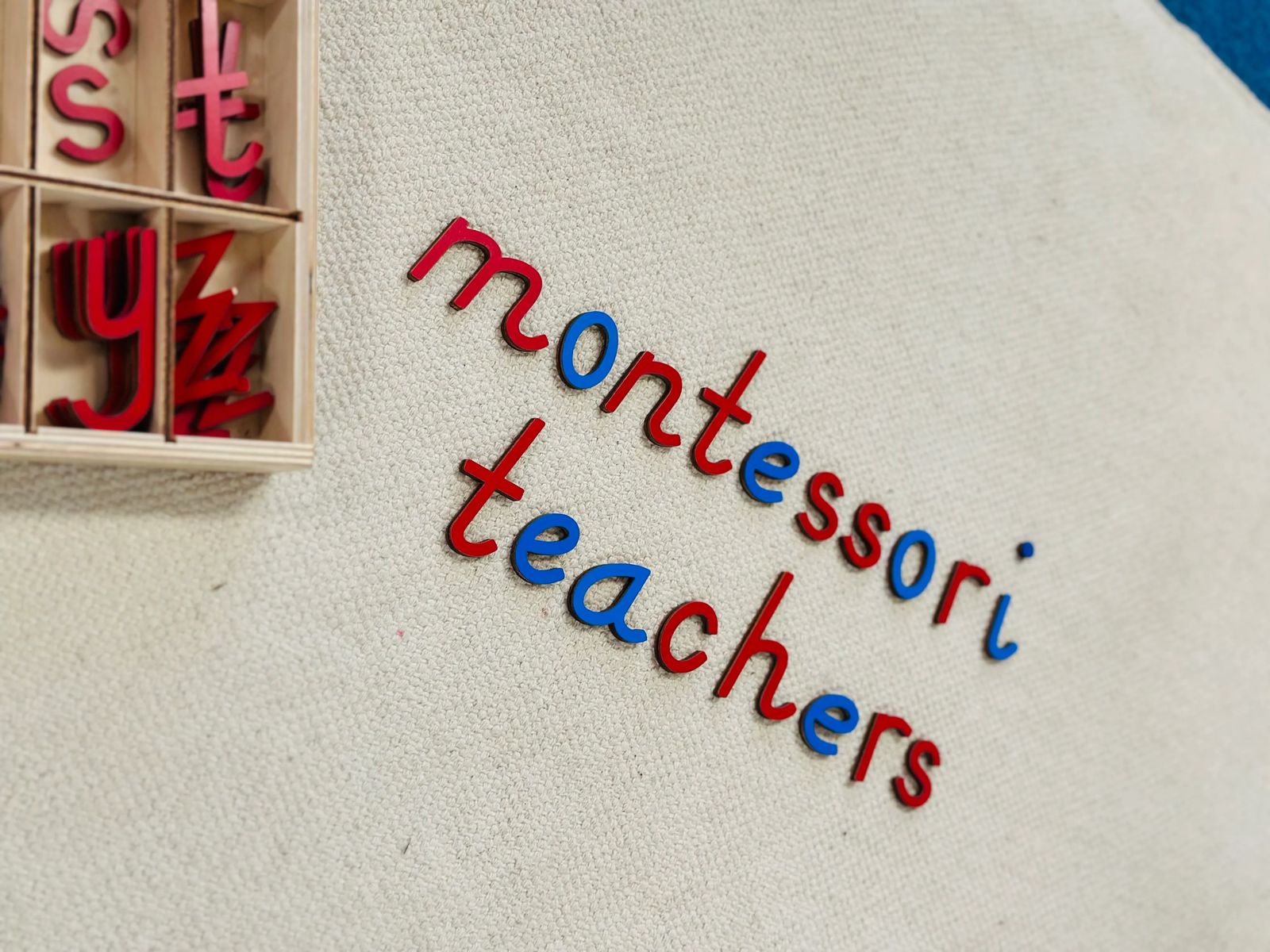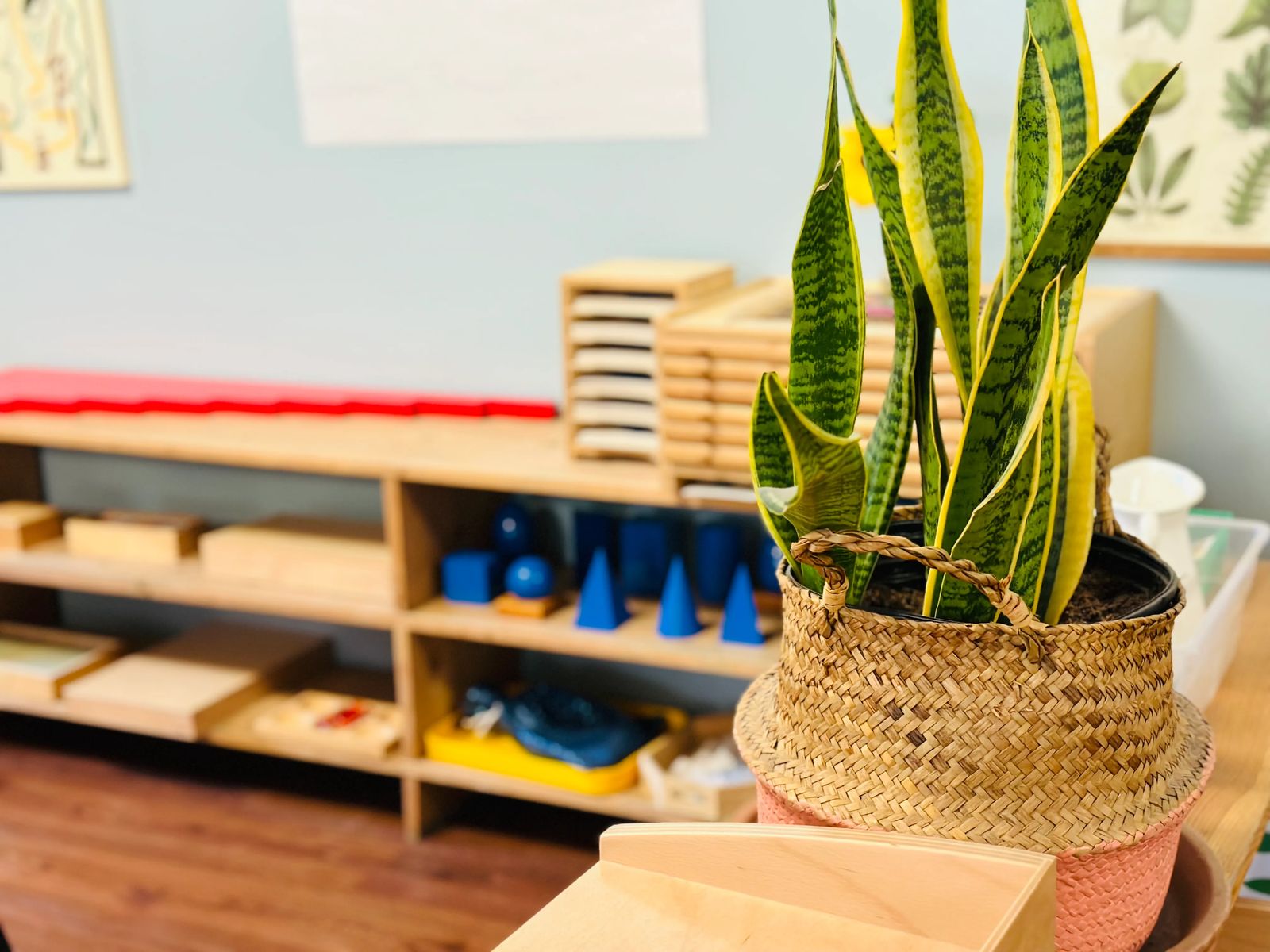Mindfulness and Montessori
October 19, 2023
by Heidi Tussing

Most of us have heard the term mindfulness. It has existed in Eastern culture for centuries, rooted in Buddhist and Hindu traditions. Though it awakened only recently in the West, it’s been long enough to take hold, with research to support the many benefits for both adults and children.
What is Mindfulness?
The term can generate many definitions and uses - to some it may be a tool, whereas for others, a path. However, it ultimately involves an awareness of mind and body with a focus on the present. In her book, I Am Peace, Susan Verde describes mindfulness as “paying careful attention to our experience (our feelings, sensations in the body, emotions, and surroundings) without judgment but with kindness and curiosity.” Mindfulness implies a focus and concentration with one’s experience in the present moment and free of distraction from outside sources. For those familiar with Montessori, this definition reflects a deep correlation between mindfulness and the Montessori environment.
Mindfulness in the Montessori Environment
Though Maria Montessori did not specifically use the term “mindfulness”, much of her writing and work with children acknowledges a deep connection between the body, mind, and spirit. As Montessori learned through her observations, “watching a child makes it obvious that the development of his mind comes about through his movements…mind and movement are part of the same entity.” Mindfulness is interwoven within the Montessori environment in a myriad of ways.

Work Time
The long uninterrupted work time in a Montessori classroom fosters the child’s ability to engage in meaningful and mindful work, providing the opportunity for deep concentration. The guide in the classroom also demonstrates a respect for the child’s sacred work time, knowing that when fully engaged in work with focused concentration, the child is not to be interrupted. When children are in deep concentration, they are afforded the opportunity for mindfulness.
Freedom of Movement and Choice
In the carefully prepared Montessori environment, the child is also allowed certain freedoms – the freedom of movement and choice. The child moves freely about the classroom, choosing where to sit and do work, carrying lessons to and from the shelves. The child also is free to choose what work meets her inner needs. This freedom affords the child the opportunity to pay careful attention to her experience with the Montessori materials – a trait of mindfulness.


The Montessori Guide
The children act as their own inner guide – they follow their interests and what “moves” them. The teacher or guide’s role is to nurture the spirit of the child, being aware of his sensitive period (a period when learning comes very easily), and what lessons will
be the perfect match to meet that child’s sensitive period. This requires constant vigilance and observation on the guide’s part – of being present and mindful of the child’s needs.
The Prepared Environment
The prepared Montessori environment is orderly with a place for everything. The child pays special attention to where things belong, thus knowing where to return the material when finished and where to find it again. In addition, the Montessori environment is simple, beautiful, inviting, attractive, and well cared for by the children and guides. Children are mindful of these traits in a classroom which creates a calm and focused reverence.

Montessori Materials & Lessons
Many of the lessons and materials within the classroom also foster mindfulness. The sensorial materials are designed to provide an awareness of the child’s senses. The lessons in “Grace and Courtesy” teach mindful awareness of others by using quiet voices, walking around mats, returning materials where they were found, preparing the material for the next person, waiting until the lesson is available (only one of each lesson), cleaning up after themselves, and helping others. Many of the cultural lessons cultivate a respect and reverence for nature and the natural world, as well as other cultures. The lesson of “Walking the Line” is a quiet meditation, focusing on each step and the careful, controlled movement of the body. The “Silence Game” gives children an opportunity to “listen to the quiet”, focus on their breath, become aware of sensations/ emotions, self-reflect, and gain a calm demeanor – essentially being mindful.
With these numerous similarities between mindfulness and Montessori, Dr. Montessori’s education once again proves to be timeless, innovative, and forward-thinking. Both foster a child’s physical, social, emotional, and mental development while supporting a deep connection between mind and body that is key in walking a path of mindfulness.
Resources
There are a multitude of resources available to learn more about mindfulness. Here are some of my favorites —
For All (children, teachers, parents):
Eline Snel. Sitting Still Like a Frog: Mindfulness Exercises for Kids (and their parents). 2013.
Nicola Edwards. Happy: A Beginner’s Book of Mindfulness. 2020.
Susan Verde. I Am Peace: A Book of Mindfulness. 2017.
Thich Nhat Hanh. A Handful of Quiet: Happiness in Four Pebbles. 2012.
Imagine Meditation Cards for Kids. 2019.
For Teachers:
Thich Nhat Hanh & Katherine Weare. Happy Teachers Change the World. 2017.

Heidi has a bachelor’s degree in political science from the University of Nebraska and a Master of Social Work degree from the University of Wyoming. She completed her EC Montessori certification in Kalispell, MT in 2009 and worked in several Montessori early childhood environments in Helena. She was the teacher for the first ever public Montessori preschool in Montana which was funded by the MT Legislature. She went on to obtain her Elementary I certification from Authentic Institute of Montessori and taught a lower Elementary class at a private Montessori school in Helena. Heidi currently is a substitute teacher for the public elementary Montessori teachers and a Faculty Advisor for Authentic Institute of Montessori.
